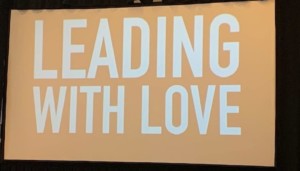Mythbusting: Q&A with K12 Leadership

Following up on the release of a candid Academic Report in February, I visited with a group of senior executives at K12 last week including:
- Ron Packard, founder & CEO
- Margaret Jorgensen, Chief Academic Officer
- Allison Cleveland, EVP School Management
- Maria Szalay, EVP Product Development
- Tom DiGiovanni, VP Product Development
- Teresa Scavulli, VP Academic Services
- Jeff Kwitowski, SVP Public Affairs
Following is a recap of our conversation.
What’s the biggest myth about online learning?
RP: Some people don’t appreciate the important role that teachers play in quality online learning. Like traditional schools, teachers drive the quality of the online experience.
What’s the role of the teacher?
RP: Teachers make or break the online learning experience. Our teachers take kids where they are and find out who needs individual learning. Our teachers are doing tremendous amount of synchronous instruction–not just when they ask, being proactive, reaching in and identifying what kids need, finding out who is disengaged and following best practices to engage them.
How do you support teachers?
AC: K12 employs about 5,000 great teachers. Most have strong classroom experience– 95% have 5 to10 years of experience in traditional schools. They get about 50 hours of preparation before teaching online. Experienced teachers mentor new teachers in a professional learning community. We have a long waiting list of applicants that want to teach at K12 schools—about 40 applicants for every job. The support we provide for teachers has been vastly under reported.
AC: We have a help desk for teachers; they can submit a ticket anytime. We collect the data on pain points to inform other departments. We conduct an annual teacher satisfaction survey with a pretty good response rate. We hold an annual online Promising Practices Conference.
Some critics suggest that online providers have big classes.
RP: Class size is less relevant in an online class because there are fewer behavior issues to deal with. Our average elementary student to teacher ratio is 30:1. Secondary loads are comparable to traditional schools, larger in some subjects.
What about the perception of isolation?
RP: There is a myth that online teachers don’t know their students. Most students say they know their teachers better than in a traditional classroom.
It sounds like late enrollers complete or achieve at much lower levels than returning students. Would you like to be able to restrict enrollment?
AC: The schools we serve don’t turn anybody away—we want to give everybody a chance to be successful.We don’t want to limit enrollment because kids come to online schools for many reasons—health, bullying, family moves. In most cases they haven’t been successful in a traditional setting. We are doing more in pre-enrollment to inform students and parents. We implemented face-to-face meeting at Agora Cyber Charter School (Pennsylvania), our biggest school, and got small increase in retention. Where we don’t get an in person meeting, we do want to make sure kids know what they’re getting with online learning. We want to develop policies with authorizers so when it’s not working for a student in an online setting there are alternatives.
Would it help if you had multiple start dates?
AC: In most schools we have several start dates and 3 or 4 cohorts all with the same end date. The last cohort may not have full load—maybe just two courses for a short semester. Most states do not have funding models to support year round school with multiple start dates.
What about kids that don’t engage?
AC: Students that engage do well and kids that don’t flounder. Engagement is even more important than in a traditional model—if they are not engaged, there’s probably no learning going on. We have a moral obligation to inform students and parents about the rigors and demands of learning online. But we also need a way to get kids into a different setting if they are not engaged. There are real hurdles to enforcing truancy—it’s often hard to find truant online students. In Colorado, there are significant hurdles school need to go through, including going through court system, to dis-enroll chronically truant students.
Some have suggested a higher bar for online enrollment.
RP: A full time online school is different that a school like KIPP that is very difficult to scale. Online learning is massively scalable. It’s important to remember that for a lot of students and families, online learning is the only option. We serve mobile military families, students that have been bullied, and students out on long term medical leave. Accessibility is a wonderful for these families, but it is also the primary reason there is so much turnover—and turnover isn’t a bad thing when a short term need has been met. If the entry a bar is set at demonstrated proficiency then it neuters choices for families for whom traditional schools are not working.
Your Academic Report shows high rates of growth, especially in reading,
MG: States are using criterion referenced tests to impute gains—not something they were designed to do. Academic gains are much better measured by adaptive tests like the Scantron test we use.
RP: The way current growth measure work, it encourages selective teaching to the test—teaching the stuff weighted on test and skipping hard to teach topics. Big swings in the measured effectiveness of teachers using estimated growth models suggests problems with current state growth models.
Some people think you just serve high performing homeschoolers.
RP: Between 50-70% of new enrolling students are substantially behind—they are from families not well served by traditional schools. It’s the opposite of positive selection bias that other public school options, such as KIPP, experience. Unlike a traditional school, we don’t control the learning environment. But we know that if students engage with the curriculum that Maria Szalay’s team has built you get a great education. Our measured gains for engaged students are stunning. But if you don’t engage with the learning program, you won’t succeed.
Is there a certain kind of students that is successful online?
RP: Learning online isn’t for everyone but there is not a narrow success profile. We think that students should have choices and families should have choices. Based on our blended learning program in Chicago called K12 Passport – a drop-out recovery program for at-risk students – we think self-paced learning in a supportive environment will have a big effect on reducing the number of high school dropouts. Students can get out of an environment they have and we can surgically repair their transcript. They benefit from 15 hours per week of onsite academic support, guidance and social services.
You’ve been criticized for getting paid for kids that leave.
RP: With so many late enrollers, the opposite is true in many states—every year K12 assumes the full costs for thousands of students without getting paid because if they want to enroll, we don’t want to turn them away
Is online learning gaining acceptance?
RP: MOOCs are helpful, the are making online learning more socially acceptable .
Is online learning a lot cheaper?
RP: Despite similar costs, online learning receives about 60% of full funding in most places; a third in some places.
How will online learning reshape high schools?
RP: Core courses for most students will be blended but I think most electives will go online. As I note in my book, that will allow many communities to double shift schools significantly reducing the need for new facilities.
What’s next?
TG: We’re launching a new preschool product called Embark12. It can be used at home or in an early learning center. There are 1200 activities embedded in 18 themes including family, animals, mealtime, and where we live. Embark12 is not another babysitting app–it is designed as an adult with child learning model. It encourages communication, interaction, sharing, and learning from each other.
Disclosure: K12 is a Getting Smart Advocacy Partner




Aaron Johnson
Tom, Thanks for this interview. In my hometown, they recently built a new high school, and tore down the old one. The small community is now shouldering a significant tax burden. My first thought was, how much did they take into account how online and blended learning will affect the the design and use of these new facilities? Later, I found out that the building was state mandated; schools of a certain age in Ohio had to be phased out, and new schools must be built in their place. Hopefully, our legislatures and school boards will begin giving a significant place to online and blended learning in their longer-range projects and policies.
Cindy Buckley
Thank you for having a wonderful program for kids that think outside of the box.